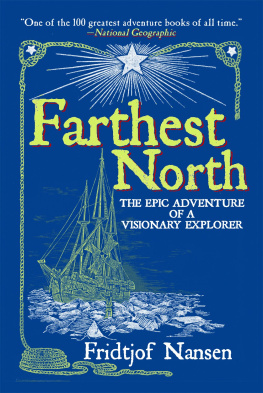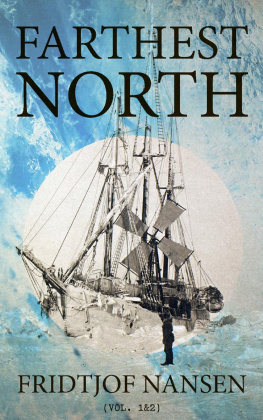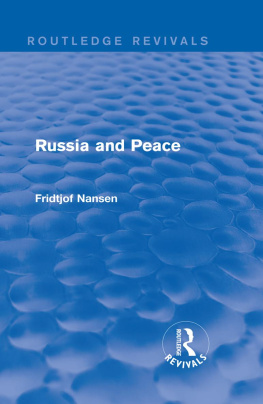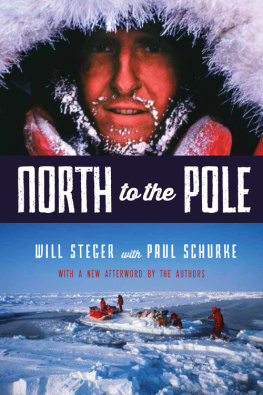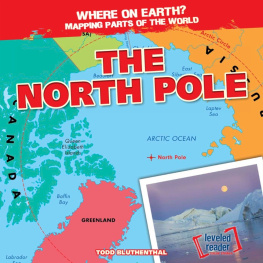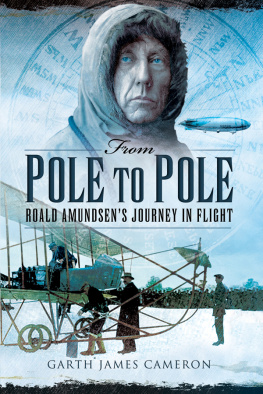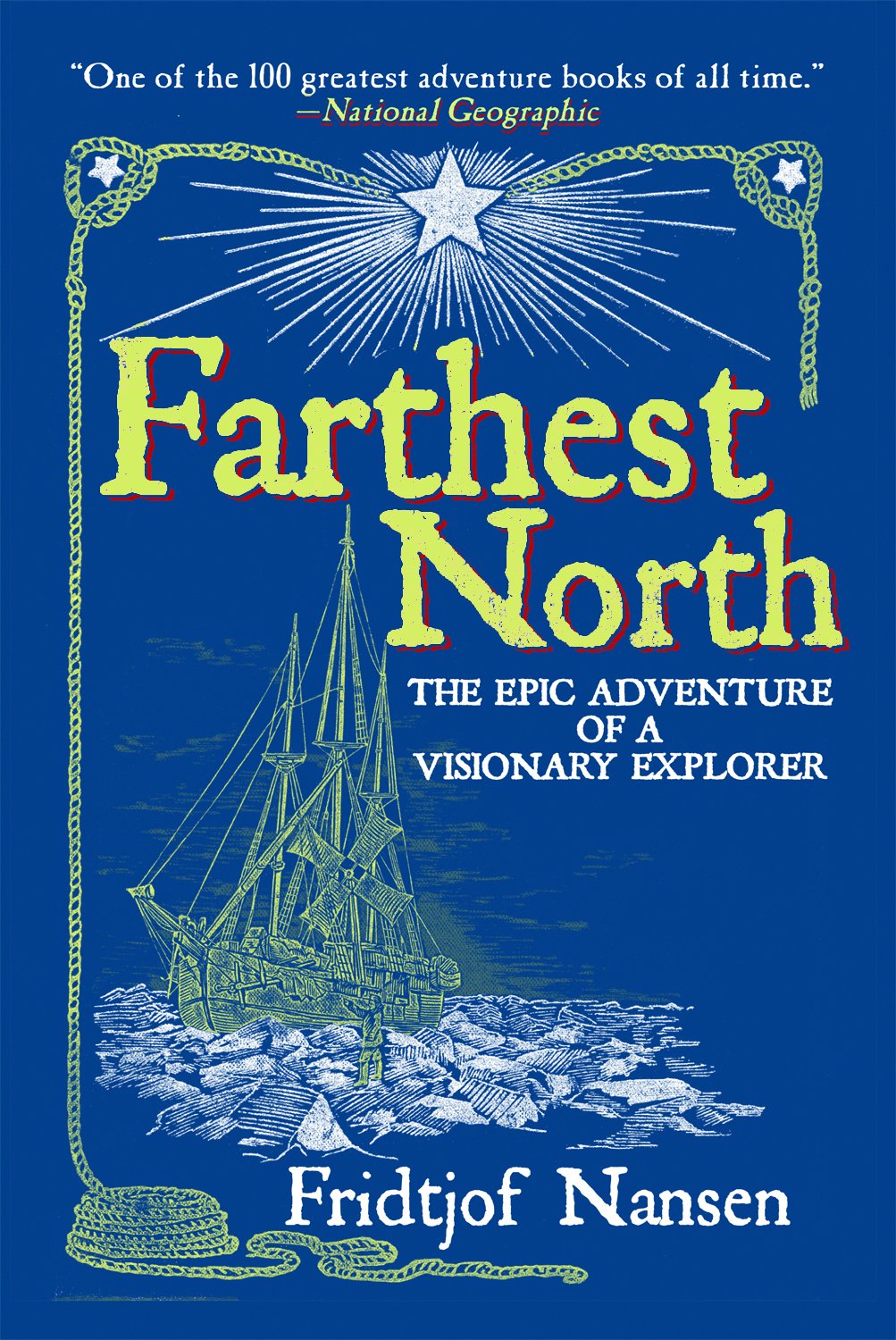CONCLUSION.
BY FRIDTJOF NANSEN.
WHAT, then, are the results of the Norwegian Polar Expedition? This is a question which the reader might fairly expect to find answered here; but the scientific observations brought back are so varied and voluminous that it will be some time yet before they can be dealt with by specialists and before any general estimate of their significance can be formed. It will, therefore, be necessary to publish these results in separate scientific publications; and if I now attempted to give an idea of them, it would necessarily be imperfect, and might easily prove misleading. I shall, therefore, confine myself to pointing out a few of their more important features.
In the first place, we have demonstrated that the sea in the immediate neighbourhood of the Pole, and in which, in my opinion, the Pole itself in all probability lies, is a deep basin, not a shallow one containing many expanses of land and islands, as people were formerly inclined to assume. It is certainly a continuation of the deep channel which extends from the Atlantic Ocean northwards between Spitz-bergen and Greenland. The extent of this deep sea is a question which it is not at present easy to answer; but we at least know that it extends a long way north of Franz Josef Land, and eastwards right to the New Siberian Islands. I believe that it extends still further east, as, I think, may be inferred from the fact that, the more the Jeannette Expedition drifted north, the greater depth of sea did they find. For various reasons, I am led to believe that in a northerly direction also this deep sea is of considerable extent. In the first place, nothing was observed, either during the drift of the Fram or during our sledge expedition to the north, that would point to the proximity of any considerable expanse of land; the ice seemed to drift unimpeded, particularly in a northerly direction. The way in which the drift set straight to the north as soon as there was a southerly wind was most striking. It was with the greatest difficulty that the wind could head the drift back towards the south-east. Had there been any considerable expanse of land within reasonable distance to the north of us, it would have blocked the free movement of the ice in that direction. Besides, the large quantity of drift-ice, which drifts southwards with great rapidity, along the east coast of Greenland all the way down to Cape Farewell and beyond it, seems to point in the same direction. Such extensive ice-fields must have a still larger breadth of sea to come from than that through which we drifted. Had the Fram continued her drift instead of breaking loose to the north of Spitzbergen, she would certainly have come down along the coast of Greenland; but probably she would not have got close in to that coast, but would have had a certain quantity of ice between her and it; and that ice must come from a sea lying north of our route. On the other hand, it is quite probable that land may exist to a considerable extent on the other side of the Pole between the Pole and the North American archipelago. It appears to me only reasonable to assume that this multitude of islands must extend further towards the north.
As a result of our expedition, I think we can now form a fairly clear idea of the way in which the drift-ice is continually moving from one side of the polar basin north of Behring Strait and the coast of Siberia, and across the regions around the Pole, and out towards the Atlantic Ocean. Where geographers at one time were disposed to locate a solid, immovable, and massive ice-mantle, covering the northern extremity of our globe, we now find a continually breaking and shifting expanse of drift-ice. The evidence which even before our expedition had induced me to believe most strongly in this theory is supplied by the Siberian drift-wood that is continually being carried to Greenland, as well as the mud found on the ice, as it could scarcely be of other than Siberian origin. We found several indications of this kind during our expedition, even when we were as far north as 86, furnishing valuable indications as to the movement of the ice.
The force which sets this ice in motion is certainly for the most part supplied by the winds; and as in the sea north of Siberia the prevailing winds are south-easterly or easterly, whereas north of Spitzbergen they are north-easterly, they must carry the ice in the direction in which we found the drift. From the numerous observations I made I established the existence of a slow current in the water under the ice, travelling in the same direction. But it will be some time before the results of these investigations can be calculated and checked.
The hydrographic observations made during the expedition furnished some surprising data. Thus, for instance, it was customary to look upon the polar basin as being filled with cold water, the temperature of which stood somewhere about1.5C. Consequently our observations showing that under the cold surface there was warmer water, sometimes at a temperature as high as +1C., were surprising. Again, this water was more briny than the water of the polar basin has been assumed to be. This warmer and more strongly saline water must clearly originate from the warmer current of the Atlantic Ocean (the Gulf Stream), flowing in a north and northeasterly direction off Novaya Zemlya and along the west coast of Spitzbergen, and then diving under the colder, but lighter and less briny, water of the Polar Sea, and filling up the depths of the polar basin. As I have stated in the course of my narrative, this more briny water was, as a rule, warmest at a depth of from 200 to 250 fathoms, beyond which it would decrease in temperature, though not uniformly, as the depth increased. Near the bottom the temperature rose again, though only slightly. These hydrographic observations appear to modify to a not inconsiderable extent the theories hitherto entertained as to the direction of the currents in the northern seas; but it is a difficult matter to deal with, as there is a great mass of material, and its further treatment will demand both time and patience. It must therefore be left to subsequent scientific publications.
Still less do I contemplate attempting to enter here into a discussion on the numerous magnetic, astronomical, and meteorological observations taken. At the end of this work I merely give a table showing the mean temperatures for each month during the drift of the Fram and during our sledging expedition.
On the whole, it may probably be said that, although the expedition has left many problems for the future to solve in connection with the polar area, it has, nevertheless, gone far to lift the veil of mystery which has hitherto shrouded those regions, and we have been put in a position to form a tolerably clear and reasonable idea of a portion of our globe that formerly lay in darkness, which only the imagination could penetrate. And should we in the near future get a birds-eye view of the regions around the Pole as seen from a balloon, all the most material features will be familiar to us.
But there still remains a great deal to be investigated, and this can only be done by years of observation, to which end a new drift, like that of the Fram , would be invaluable. Guided by our experience, explorers will be in a position to equip themselves still better; but a more convenient method for the scientific investigation of unknown regions cannot easily be imagined. On board a vessel of this kind, explorers may settle themselves quite as comfortably as in a fixed scientific station. They can carry their laboratories with them, and the most delicate experiments of all kinds can be carried out. I hope that such an expedition may be undertaken ere long, and if it goes through Behring Strait and thence northwards, or perhaps slightly to the north-east, I shall be very much surprised if observations are not taken which will prove of far greater scope and importance than those made by us. But it will require patience: the drift will be more protracted than ours, and the explorers must be well equipped.

